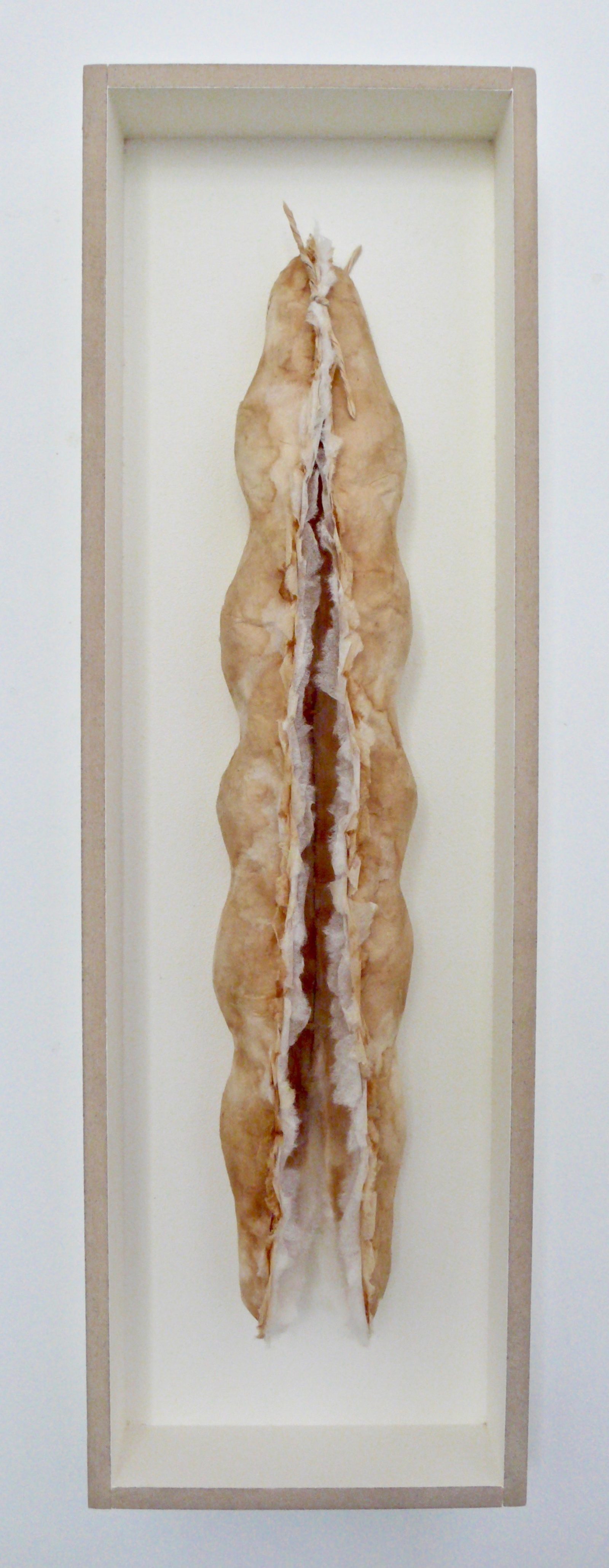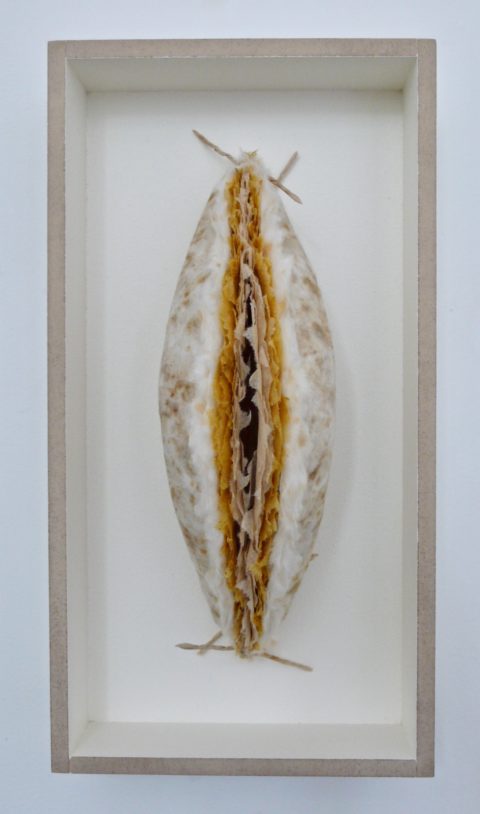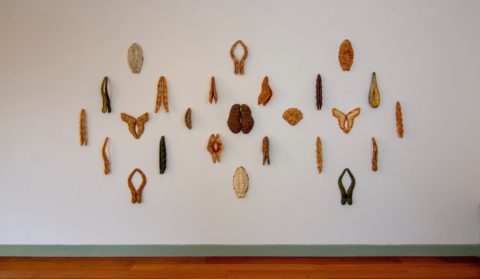
‘The Curious One’
from the series: 'Cupid’s cloister'

Recycled paper, Japanese washi, binding m., paper rope, box
L 47,5 cm x B 14,5 cm x H 6,5 cm
from the series: 'Cupid’s cloister'

Recycled paper, Japanese washi, binding m., paper rope, box
L 31,5 cm x B 16,5 cm x H 6,5 cm
from the series: 'Sensitive Cave'

Paper Biennial Rijswijk 2018, Museum Rijswijk, NL
Photo by Wil Kouwer
‘I am not what I am, I am what I do with my hands.’ (Louise Bourgeois)
Video © Sonata Lepaitė / Sculpturepods
Sonata Lepaitė, afkomstig uit Litouwen, creëert zowel sculpturen gemaakt van papier, ‘scupturepods’, als pastels op papier.
De vormen verwijzen naar omhulsel, vulva, schoot, poort, yoni en cocon.
Deze verbeeldende, metaforische beelden tonen impliciet onze afkomst, ons verlangen en onze geborgenheid.
Sonata is gefascineerd en wordt geïnspireerd door de onbegrensde rijkdom aan paleolithische en neolithische sculpturale zg. ‘venus’ artefacten uit een nog grenzeloos antropologisch tijdsbeeld.
Een grote, verwante diversiteit uit zowel de koude als warme klimaatzones van kleine, voornamelijk vrouwelijke figuren, worden overal ter wereld gevonden en opgegraven. Ze verwijzen naar tijden vanaf 40.000 jaar geleden en verbeelden symbolen, representaties, rituelen en betekenissen waarnaar en waarover archeologen en antropologen eindeloos speculeren.
Ze zijn even raadselachtig, betoverend en opwindend, als grenzeloos in wat ons als mensen verbindt.
Sonata transformeert en verwerkt haar fascinatie en inspiratie in haar huidige ruimtelijke en vlakke werken.
Opleiding: Hogeschool voor de Kunsten Utrecht, Bachelor Fine Art, 2003 - 2007
Website: www.sculpturepods.com